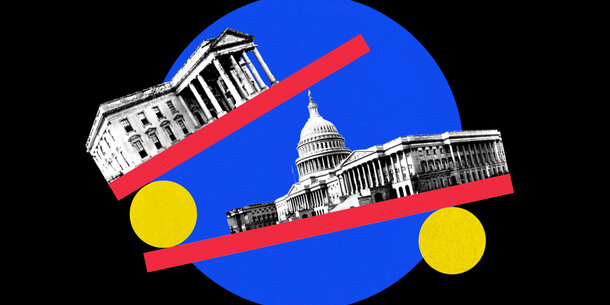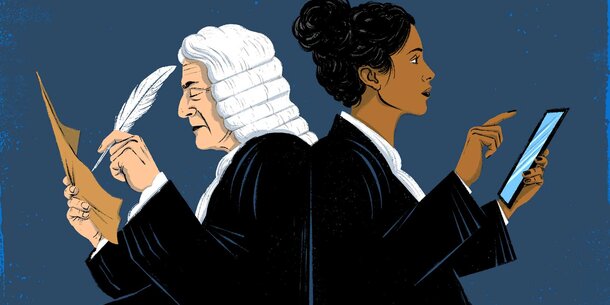Earlier this year, the Brennan Center published a report detailing how to improve election administration at the New York City Board of Elections (NYC BOE), which serves more than 5.5 million voters.1 While the city board’s failures often garner the most public attention, this study finds that they are not unique. Major flaws across the state’s other 57 local boards of elections (BOEs) too often hamper voting for 7.8 million more New Yorkers.2
In the past two years alone, voters across the state waited in early voting lines for as long as two hours — four times the legal limit.3 The Rensselaer County BOE ignored state law and voters’ demands until a court ordered local election officials to establish an early voting site that was accessible for low-income voters who rely on public transportation.4 A high-profile court dispute over challenged ballots in the 22nd Congressional District revealed inconsistent practices across eight local BOEs, including the Oneida County BOE’s failure to register 2,400 voters who had applied in time to vote in the 2020 general election. The judge observed that it was impossible to know how many of these voters left their poll sites without casting a ballot.5
In our first report, we recommended solutions that the state legislature — whose laws establish and govern local election administration throughout New York — should enact immediately to fix the NYC BOE’s notorious dysfunction. Our research beyond the five boroughs shows the need for many of the same solutions statewide, including greater accountability for commissioners, competitive hiring practices, improved training, and more information transparency.
Examination of local BOEs statewide reveals still other significant flaws that demand additional solutions. Chief among them: Though the New York State Board of Elections (NYS BOE) serves as the state’s central elections agency, it does not provide the comprehensive, centralized legal guidance and oversight needed for a voting system run by 124 local commissioners, some part-time, with no required experience or training. Current state law leaves local election officials to figure out most procedures on their own, often to the detriment of voters and sometimes in conflict with state and federal law. Many local BOEs also lack sufficient expertise, resources, and staff to meet modern election administration standards. And they typically make decisions behind closed doors, with no public forum for voters and advocates to communicate needs and ideas.
Fixing these systemic flaws is critical for our state’s democracy. As State Senate Elections Committee Chair Zellnor Myrie put it in his November 2021 report, “Administering elections is a government function unlike any other; it is democracy’s operating system. Yet New York’s system of election administration offers less oversight, accountability, and transparency to elected officials and the public than the agencies that regulate parking meters and playgrounds.”6
Our research, incorporating lessons from other states and insights from local stakeholders and advocates, informs the following recommendations for fundamental reforms that state lawmakers must enact immediately.7
Require comprehensive oversight of local election administration by the New York State Board of Elections.
Issue: New York’s central elections agency, the NYS BOE, provides only limited guidance to and oversight of local BOEs, resulting in diminished and unequal voter service and failures to follow state and federal law.
Solutions:
- Add a fifth NYS BOE commissioner — one who is not registered with any party — to facilitate timely action and avoid gridlock.
- Hire a single executive director — rather than bipartisan codirectors — to carry out and streamline the NYS BOE’s operations.
- Require the NYS BOE to set uniform standards and best practices for carrying out election administration duties.
- Require all local commissioners and deputy commissioners to complete training conducted by the NYS BOE and improve rank-and-file training.
- Empower the NYS BOE to request removal of failing local election officials.
Modernize local BOE commissioner selection and staff hiring practices.
Issue: The current process for selecting local commissioners and hiring staff prioritizes political ties over experience relevant to serving voters. Commissioners who work only part-time and obstacles to hiring poll workers also hamstring local BOEs, contributing to inadequate service that modernized leadership and staffing can remedy.
Solutions:
- Require county legislatures to conduct transparent, merit-based processes for appointing commissioners.
- Strike the requirement from state statute that needlessly extends the constitution’s limited bipartisanship requirement to all rank-and-file staff of local BOEs.
- Require public, detailed, and broadly disseminated job postings for all local BOE positions to ensure selection from broad pools of qualified candidates.
- Require full-time commissioners with staggered terms or full-time executive directors to ensure continuity of institutional knowledge.
- Establish shared staffing programs between local BOEs and county governments during busy voting periods.
- Invest in robust recruitment and training programs for student poll workers, who tend to be technologically savvy and linguistically diverse.
- Encourage local BOEs to allow split-day shifts for poll workers, enabling more people to serve.
Increase and scale resources for local BOEs.
Issue: Many local BOEs lack the staff capacity, funding, and infrastructure to meet the increasing demands of election administration. These shortages limit voting opportunities and leave local BOEs vulnerable to technical failures that make it more difficult for voters to cast a ballot and have their vote counted.
Solutions:
- Provide long-term, sustainable funding to ensure that every local board has the resources it needs to run elections.
- Centralize and scale certain election administration needs, shifting those costs from individual counties to the state.
- Create regional election staff for certain specialized functions to assist multiple local BOEs.
- Establish an advisory group of election officials and voting advocates to help plan and provide feedback on local boards’ implementation of legislation.
Make local BOEs transparent and accountable to the public.
Issue: Local BOEs too often fail to communicate essential information to voters and do not share data in a manner that allows members of the public to understand their voting options, or advocates to determine what changes BOEs could make to improve voter service. Even when these failures cost people opportunities to vote, local commissioners face little accountability.
Solutions:
- Require local BOEs to share necessary election information with voters in a timely and accessible manner.
- Require local BOEs to report — and the state to collect and publish in an accessible format — key data for assessing and improving election administration and the implementation of new state laws, such as pre-registration for 16– and 17-year-olds.
- Give locally accountable elected officials the power to remove commissioners for just cause, with review by the courts.
Consolidate local election dates and administration.
Issue: Numerous off-cycle elections, such as school board and village contests, which are often run by entities other than BOEs, see low turnout and election administration problems.
Solutions:
- Consolidate election dates to increase voter turnout and allow more time for administrative improvements between elections.
- Require local BOEs to administer village and school district elections, cutting down on duplication of services and making it easier for both the NYS BOE and independent actors to monitor elections and identify any noncompliance with state or federal law.
●●●
As with our last report, this study recommends reforms that the state legislature can and should adopt immediately to fundamentally improve elections for all New Yorkers. Other changes, such as removing the bipartisan requirement from BOEs altogether, would require a multiyear process to amend the state constitution. While these ideas and others may be worth further study, they should not delay transformative reforms that are possible now.
Notas al Pie
-
1
Joanna Zdanys et al., How to Fix the New York City Board of Elections, Brennan Center for Justice, September 9, 2021, https://www.brennancenter.org/our-work/policy-solutions/how-fix-newyork-city-board-elections. -
2
New York State Board of Elections, Albany, NY (hereinafter NYS BOE), “Enrollment by County,” last modified November 1, 2021, https://www.elections.ny.gov/EnrollmentCounty.html. -
3
Jon Campbell et al., “New York Early Voting: The Long Lines Just Won’t Let Up. Here’s Why,” Journal News (White Plains, NY), October 29, 2020, https://www.lohud.com/story/news/2020/10/29/new-york-early-voting-long-lines/6054444002/; Brianna Hamblin and Spectrum News Staff, “Rochester Voters Wait in Line During First Day of Early Voting in New York,” Spectrum News Rochester, October 24, 2020, https://spectrumlocalnews.com/nys/rochester/2020-elections/2020/10/24/rochester-voters-wait-in-line-during-first-day-of-early-voting-in-new-york; and N.Y. Elec. Law § 3–400(9) (McKinney 2021). -
4
In re the People of the State of New York v. Schofield, 73 Misc.3d 1209(A) (N.Y. App. Div. 2021). -
5
Patrick Lohmann, “Claudia Tenney to Be Certified as Winner of New York’s 22nd Race, Judge Rules,” Post-Standard (Syracuse, NY), February 5, 2021, https://www.syracuse.com/politics/cny/2021/02/claudia-tenney-to-be-certified-as-winner-of-new-yorks-22nd-race.html; and Tenney v. Oswego County Board of Elections, 71 Misc.3d 421, 425 (Sup. Ct. Oswego Cnty. 2021). -
6
Report and Findings of the New York State Senate Elections Committee, New York State Senate Elections Committee, November 15, 2021, 18, https://www.nysenate.gov/sites/default/files/press-release/attachment/elex1115_vfinal.pdf. -
7
The findings in this report — of the nature and consequences of these systemic flaws and of the potential for progress in fixing them — derive not merely from study of law, policy, investigative reports, and court decisions. They also reflect the perspectives and lessons gleaned from interviews with five current local election officials and the co-chairs of the NYS BOE. We also interviewed advocates devoted to improving voter service in New York, many of whom are members of the Let NY Vote coalition.






